The class met in the future home of the Dorthy Ramon Learning Center, a non profit group that is dedicated to saving and sharing all Southern California’s American Indian cultures, languages, history, music, and other traditional arts.
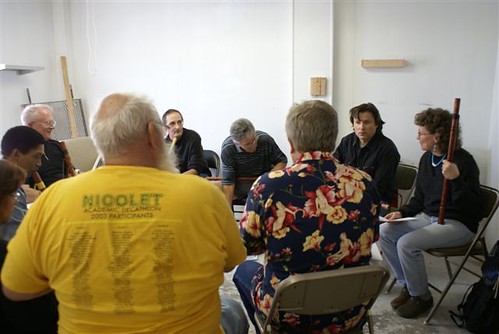
The class was made up of about eight very brave people as the Anasazi flute takes a strong will to learn to play for most people. We've looked at this flute in great detail in earlier posts so I won't go into that here.
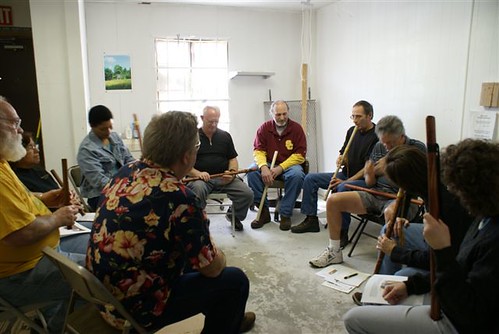
Everyone had to get a flute for the class and some did not have them very long before class day. A few chose to maker their own. A double challenge.
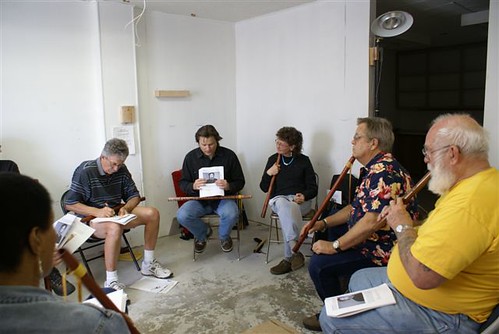
The first thing we did was to talk about the embouchure, or lip position that the player needs to learn to play the flute. Unlike the NAF the vast majority of people can't just pick up an Anasazi flute and get a tone right away. It can take days, weeks, even months of practice and the embouchure is extremely important.
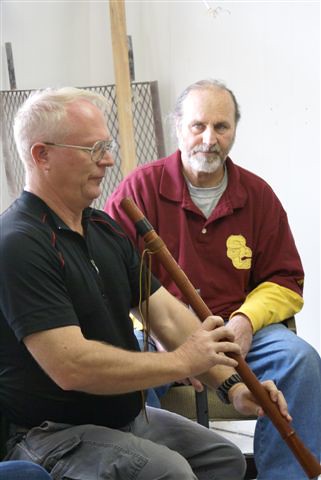
Each member of the class got to try it out for themselves and I was able to tailor my comments to every one's individual needs.
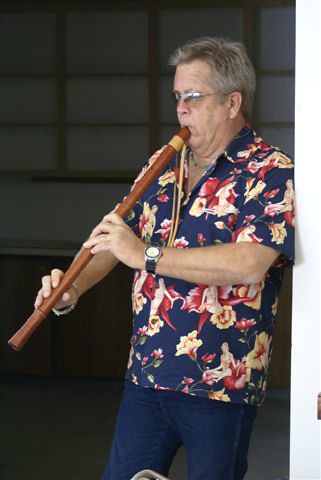
In addition to the homemade PVC Anasazi flute we had a professional maker of Native American style flutes, Rich Halliburton of Querencia Woodwinds. Rich and I are good friends but I don't know what other "woodwinds" he makes besides flutes. His NAF's however are very nice and one of his flutes won top prize at last years Oklahoma Flute Festival. John Stillwell was also at the circle meeting as was Steve Meier a budding flute maker who was there to debut some of his flutes.

Here is a photo of Michelle. She is in the military and if I remember correctly was a captain in the navy. Not many women can play the Anasazi flute due to the long length of the bore. In the photo she is playing an Ab (G#) and if she was smaller and could not reach the finger holes of this key she could try one in the key of A. I know of a maker that is planing to make some Anasazi flutes in Bb so that more women can play them. Coincidentally, I've been doing some digging lately into the original Anasazi flutes that were found by Earl Morris in "Broken Flute Cave" and it turns out that they are reported to have been in the key of Bb so these shorter flutes will still be authentic to the prehistoric ones.
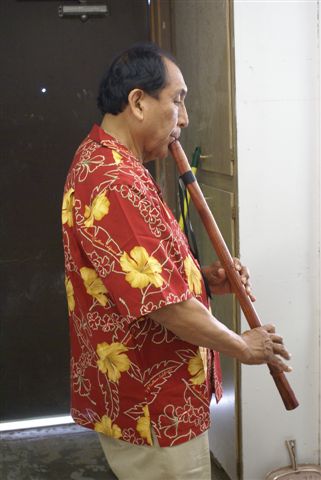
Here's a photo of Ernest Siva giving the Anasazi flute a try. Ernest is a elder of the Morrongo tribe and grew up on the Morongo Indian Reservation located in the San Gorgonio pass. The culture of this area had flutes very similar to the Anasazi flute but shorter and with a narrower bore and only four holes. Several of these are in a museum in Riverside and Marvin and Jonette Yazzie of Yazzie Flutes have made recreations of them. They are really hard to play and the pitch class of the scale is still a mystery.
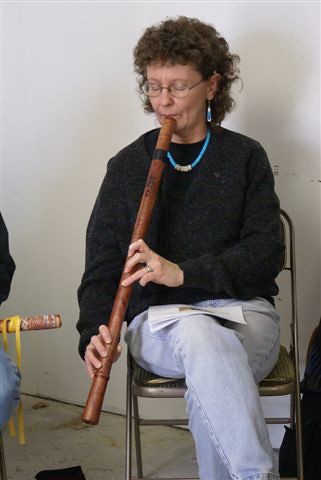
Speaking of Jonette Yazzie, here is a photo of her playing an Anasazi flute. Her playing position is not the best but as she is not that tall she found that holding the flute a little to the side was the only way she could reach the bottom finger holes. Like Michelle (shown above), Jonette is playing an Ab.

We also looked at a recreation of a Hopi flute that was in use as recently as 120 years ago. These flutes continued to be used after the Anasazi flute apparently fell out of use about A.D. 1250, which coincides with the great migration out of the four corners area and, some believe, the appearance of the kachina cult.
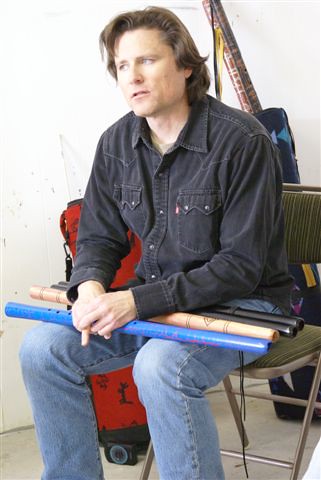
At the end of class I showed everyone some prototypes of some Anasazi flutes by a maker new to these instruments. I handed them out to the class to get some feedback on how they played for beginners. We'll look at these Anasazi flute in greater depth in a later article.
If you're interested in trying to learn to play one of these flutes I'm giving a class in Northern California on April 26 as part of the Northern California Flute Circle Spring Gathering Festival. To find out more here.